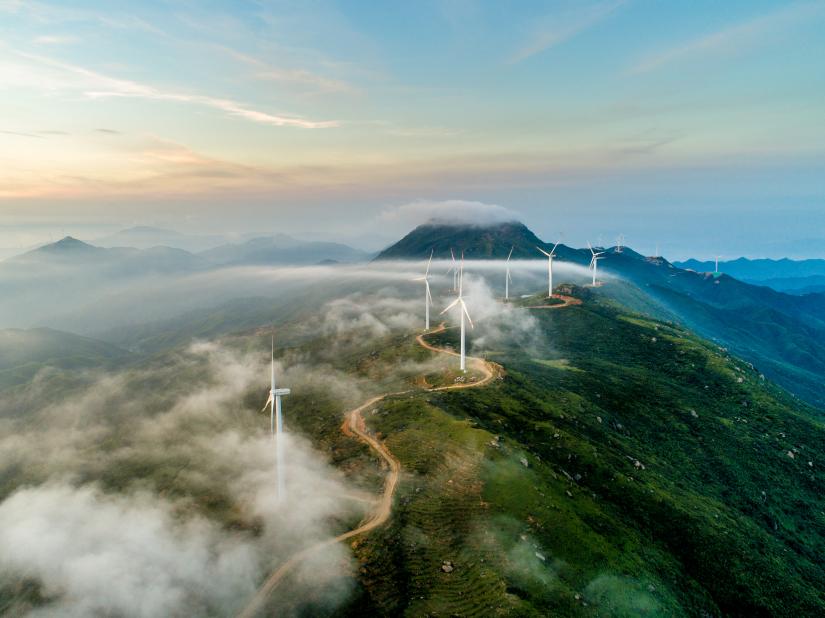Supercharging the road to 100% clean energy
The biggest challenge we have is time. ISF researchers map out the key targets to realise the clean energy transition.

Three years have passed with major changes in the climate debate from increases in extreme weather events, to global strike movements.
Future Super and The Institute for Sustainable Futures (ISF) revisit the 2018 research to see how these changes impact Australia’s clean energy transition, and whether the transition to 100% renewable energy can still be funded with the nation’s superannuation.
In this interview, ISF researchers Dr Scott Dwyer and Dr Yohan Kim map out the key targets that need to be achieved on the road to clean energy.
Provide a summary of the initial and updated project, the challenge it is solving, and the solution proposed.
In 2018, ISF and Future Super partnered to investigate the feasibility of investing Australia's superannuation funds towards for the nation's transition to a 100% renewable energy system. ISF combined its energy modelling expertise with Future Super’s data on Australia’s forecasted future superannuation funds, to define the proportion of Australia’s retirement savings that would be needed to support the transition to 100% renewables by 2050. We have recently updated this analysis with the latest data that has become available with some interesting findings.
What are the main differences between 2018’s research and the 2021 revisitation?
Between 2018 and 2020, Australia was unable to keep up with the renewable energy generation trajectory required to achieve the 2030/2050 targets. It needed to generate 42% of its total energy from non-renewable energy sources by 2020 but instead it only achieved 23%. In short, Australia now has extra work to do to make up the difference to achieve a clean energy transition.
There is some light on the horizon though. The cost of solar PV (photovoltaic) technology dropped faster than predicted by over 23%t. In addition, improved energy efficiency means that we need 9.3% less energy generated by 2030 than previously projected in 2018. Finally, the total funds under management (FUM) for superannuation has increased further 6% by 2050 compared to previous projections.
Major events since 2018 have changed the climate discussion (e.g., severe weather events, pandemic). Have the past three years changed the achievability of 100% renewable energy by 2050?
Obviously, the world looks a very different place now to how it looked in 2018. Student climate protests, strengthening net zero commitments, changing work and travel patterns, increasing energy prices, supply chain issues and falling cost of clean energy technologies. It’s a complex melting pot of issues. What will make it harder or easier to achieve 100% renewables by 2050 will be how the world chooses to respond — and whether it can keep its eye on the ultimate prize of keeping global warming below the 1.5 degrees Celsius that’s needed to avoid the worst effects of climate change.
How much of Australia's super fund would be required to make the transition to 100% renewable energy by 2050 now?
In the 2018 study, we found that 7.7% ($305 billion) of the total superannuation funds would need to be invested towards renewable energy systems to meet the 2030 Paris Agreement milestone. The updated analysis shows that we need an even smaller portion at 7.2% ($302 billion) to make this happen. It has become even more feasible for Australia’s clean energy transition to be funded by the nation’s retirement savings. The outlook has improved even more for the long term. To meet the goal of 100% decarbonisation (including transport and industry) by 2050, the updated study has shown that just 9.5%t ($754 billion) of total Super funds would need to be invested in renewables, as opposed to 12.4% ($811 billion) previously projected in 2018.
The biggest challenge we have is time. To achieve 100% renewable energy by 2050, can you map out the key targets that need to be reached leading up to 2050?
The first step would be to transition the supply of electricity to 100% renewables by 2030 for stationary power. This would involve shutting down all coal power plants and investing in solar, wind, and storage. Then by 2035, 41 percent of transport sector would need to be supplied with renewable energy, meaning a rapid transition to electric vehicles. Around the same time, 50%t of the industrial sector would also need to be supplied by renewables, which is perhaps one of the biggest challenges for decarbonising our economy and achieving 100% renewables.
RESEARCH OUTPUTS
Supercharging Australia’s Clean Energy Transition part 1 (2018)
Supercharging Australia’s Clean Energy Transition report (2018) (Report)
Supercharging Australia’s Clean Energy Transformation (2021) (Summary paper)
